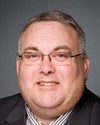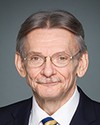Thank you, Mr. Chair. I appreciate it.
Thanks very much to all of you for your attendance today.
At the risk of igniting something that I don't want to, I was a little disappointed that the Conservatives didn't send a representative. I understand they responded to the thing and that's great.
But when I read that “it is not possible at this time for me or another appropriate representative of our Party to appear before your committee”, which is a quote from their cover letter, it basically was saying “no, we're not coming”, so I'm just a little disappointed. We've been trying so hard to be non-partisan. It suggests there was some concern that there was some kind of political trap being laid or that something untoward was going to happen should they come here.
But anyway, that's certainly their right, and that's all I have to say about the matter.
I'll pick up on the last question. The signs outside the voting area seem to be getting an awful lot of attention. If I'm understanding it, the resistance is that in an urban area it's impractical. You're going to be denying people the right to put an election sign out on their front lawns, and just because it's a packed urban area and they happen to be too close, you end up denying people their rights.
But I think we all do agree that every one of us...well, most.... I'll put it this way. It's not unusual for a campaign to eyeball what the distance is, be sure that you're safe, and then work like heck to try to catch everybody that you can just outside the safe area. They don't do that because they have nothing else to do; it's done because it can have an impact, and for people who haven't made up their minds, which is, surprisingly, quite a few. On the way to the polling station people are still mulling it over, right up to the time they get in front of the box and mark their ballots.
I just want to tease this out a little bit further. First of all, does everyone agree with the concept? Then secondly, is it just a matter of 100 metres being impractical and that it needs to be smaller? Or does there need to be a whole different approach?
I'll just open it up to all three. Don't all jump at once.




